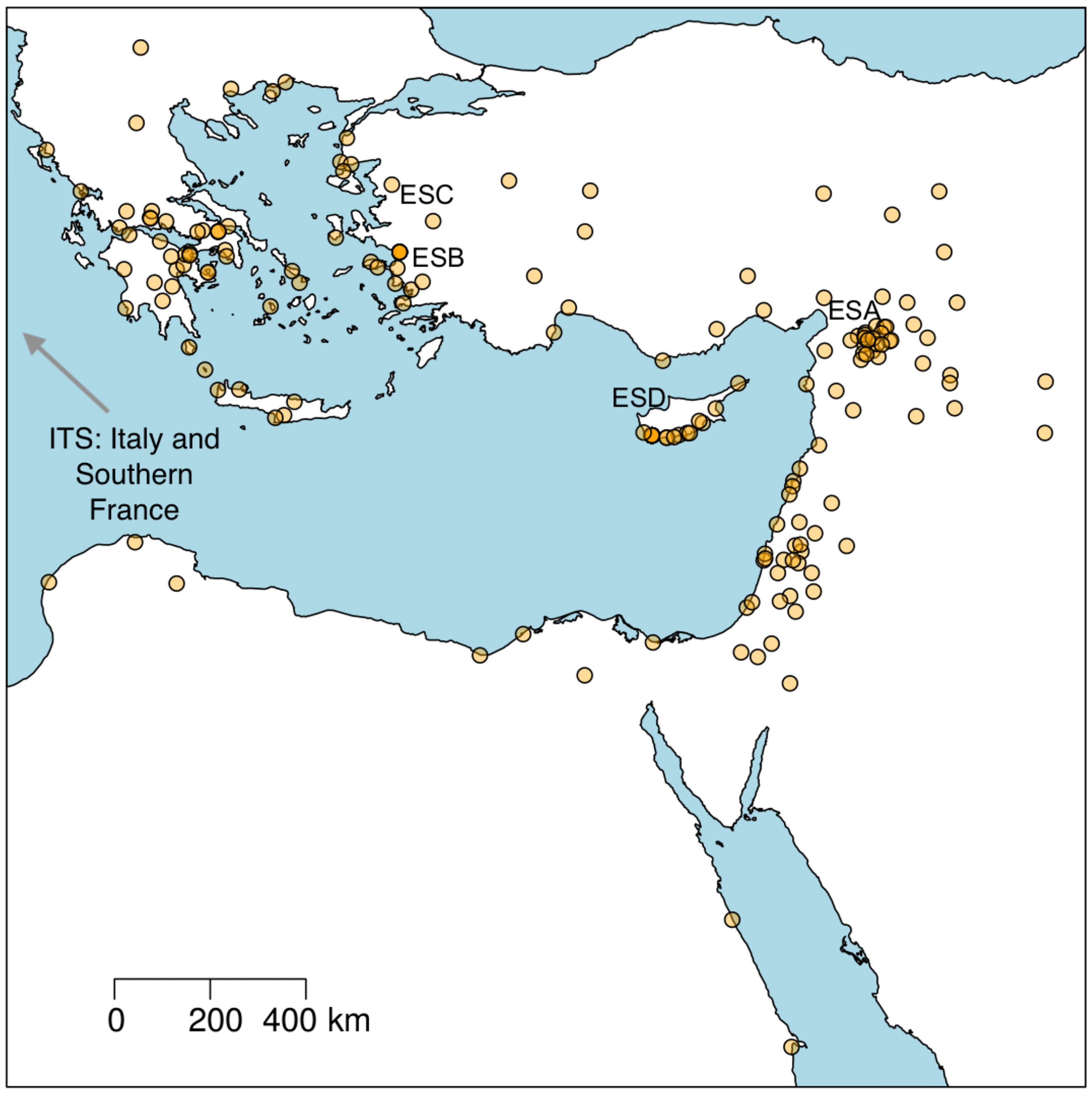Tableware trade in the Roman East: Exploring cultural and economic transmission with agent-based modelling and approximate Bayesian computation
New publication by AIAS fellow Iza Romanowska and Associate Professor Tom Brughmans together with Dr Simon Carrignon.

Carrignon, S., Brughmans, T. & Romanowska, I. (2020). ‘Tableware trade in the Roman East: Exploring cultural and economic transmission with agent-based modelling and approximate Bayesian computation’, PLoS ONE 15.11: e0240414. https://doi.org/10.1371/journal.pone.0240414.
Vast amounts of ceramic tableware (thin-walled plates, cups and bowls) were traded over huge distances throughout classical antiquity. But to what extent were the people involved in this trade informed about each other’s trading activities? Were they influenced by each other’s decisions to buy or sell certain tablewares? And to what extent did different wares that were produced in different regions compete with each other? Simon Carrignon, Tom Brughmans and Iza Romanowska explore these questions in a new open access publication in the prestigious interdisciplinary journal PLoS ONE.
In the new article, they apply agent-based modelling techniques to simulate theories of cultural transmission, to represent the flow of economic information between tableware traders. Using Approximate Bayesian Computation allows them to distinguish which of their theories best explain the distribution of excavated and published ceramic tableware in the Roman Eastern Mediterranean.
Abstract
The availability of reliable commercial information is considered a key feature of inter-regional trade if the Roman economy was highly integrated. However, the extent to which archaeological and historical sources of inter-regional trade reflect the degree of economic integration is still not fully understood, a question which lies at the heart of current debates in Roman Studies. Ceramic tableware offers one of the only comparable and quantifiable sources of information for Roman inter-regional trade over centuries-long time periods. The distribution patterns and stylistic features of tablewares from the East Mediterranean dated between 200 BC and AD 300 suggest a competitive market where buying decisions might have been influenced by access to reliable commercial information. We contribute to this debate by representing three competing hypotheses in an agent-based model: success-biased social learning of tableware buying strategies (requiring access to reliable commercial information from all traders), unbiased social learning (requiring limited access), and independent learning (requiring no access). We use approximate Bayesian computation (ABC) to evaluate which hypothesis best describes archaeologically observed tableware distribution patterns. Our results revealed success-bias is not a viable theory and we demonstrate instead that local innovation (independent learning) is a plausible driving factor in inter-regional tableware trade. We also suggest that tableware distribution should instead be explored as a small component of long-distance trade cargoes dominated by foodstuffs, metals, and building materials.
